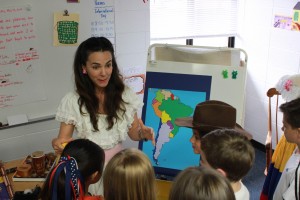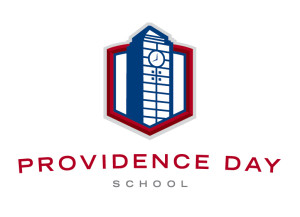By Smarty Guest Blogger, Mary Jo Adams, World Language Department Chair, Providence Day School
“To learn a language is to have one more window from which to look at the world.” –Chinese proverb
When people ask language teachers’ advice on when to start their child learning a foreign language, the answer is simple…the younger the better! The more languages we speak, the more we are able to connect with, share, and access other cultures and ideas.
 Sadly, foreign language programs are becoming extinct in elementary schools, which means that most American children will not begin language study until high school. May 15th, 2015 was National Language Advocacy Day in Washington, DC. Its purpose was to “lobby with the interest of world languages.” Read more about it in The Atlantic.
Sadly, foreign language programs are becoming extinct in elementary schools, which means that most American children will not begin language study until high school. May 15th, 2015 was National Language Advocacy Day in Washington, DC. Its purpose was to “lobby with the interest of world languages.” Read more about it in The Atlantic.
Early language education is divided into different types: FLEX, FLES and immersion programs. FLEX (Foreign Language Experiential Program) taught in elementary and middle schools provides students an exposure to another language and culture. Usually FLEX programs meet minimally during the month and are primarily taught in English. On the other hand, schools that offer 90 minutes of instruction per week or more may consider themselves a FLES (Foreign Language in Elementary Schools) program. FLES programs are usually conducted entirely in the foreign language and serve to encourage young students to begin to converse in the target language. The purpose is to continually build upon their skills in a sequential manner.
On the other hand, schools that offer 90 minutes of instruction per week or more may consider themselves a FLES (Foreign Language in Elementary Schools) program. FLES programs are usually conducted entirely in the foreign language and serve to encourage young students to begin to converse in the target language. The purpose is to continually build upon their skills in a sequential manner.
Immersion language programs encourage bilingualism. Students are taught most of the day in the chosen target language and even study other disciplines — math, science, geography — in the target language.
Any child has the ability to learn another language. Young children love learning languages and they are fearless when it comes to speaking!
Early learners tend to be more confident and less anxious than their peers who start language learning later in school. As long as they are engaged in fun activities, they happily ignore any ambiguity of language rules and do not get frustrated when they are listening to a language that they don’t understand.
Some research shows that early language instruction may lead to greater oral proficiency and higher motivation. Motivation is a key factor to language learning and early learners are more motivated by internal sources such as their own curiosity about the language, people and culture and less by external ones, like getting a job or a good grade.
Exposure to any authentic language and culture at a young age is beneficial. Even if your child’s school does not offer language at the elementary level, there are a few easy things that parents can do to enrich their child’s cultural environment:
1. Celebrate your own ancestry and language by learning and teaching your child some simple phrases such as greetings and introductions from your heritage language and culture.
2. Point out when you see signs and information written in another language. Many stores and post offices have bilingual signs.
3. Connect to local ethnic communities. Visit an ethnic restaurant and talk about the food and culture. Have your child make comparisons between our culture and the one you are visiting.
4. Enjoy the local ethnic festivals. See how many new words in the target language you and your child can pick up.
Language and culture adds color and multiple dimensions to our lives. With a click of a computer mouse, we can bring the world into our homes! Share a love of global exploration with your child.
 Mary Jo Adams is the World Language Department Chair at Providence Day and teaches both French and Spanish to lower school students. She earned her B.A.in Spanish in Education from Marquette University and a Graduate Certificate in Instructional Technology from the University of Maryland. Mary Jo currently serves as the 2nd Vice President for the Foreign Language Association of North Carolina. She recently returned from a trip to Africa.
Mary Jo Adams is the World Language Department Chair at Providence Day and teaches both French and Spanish to lower school students. She earned her B.A.in Spanish in Education from Marquette University and a Graduate Certificate in Instructional Technology from the University of Maryland. Mary Jo currently serves as the 2nd Vice President for the Foreign Language Association of North Carolina. She recently returned from a trip to Africa.
![]()
Providence Day School
5800 Sardis Road
Charlotte, NC 28270
(704) 887-6000
website
facebook
twitter: @ProvidenceDay


